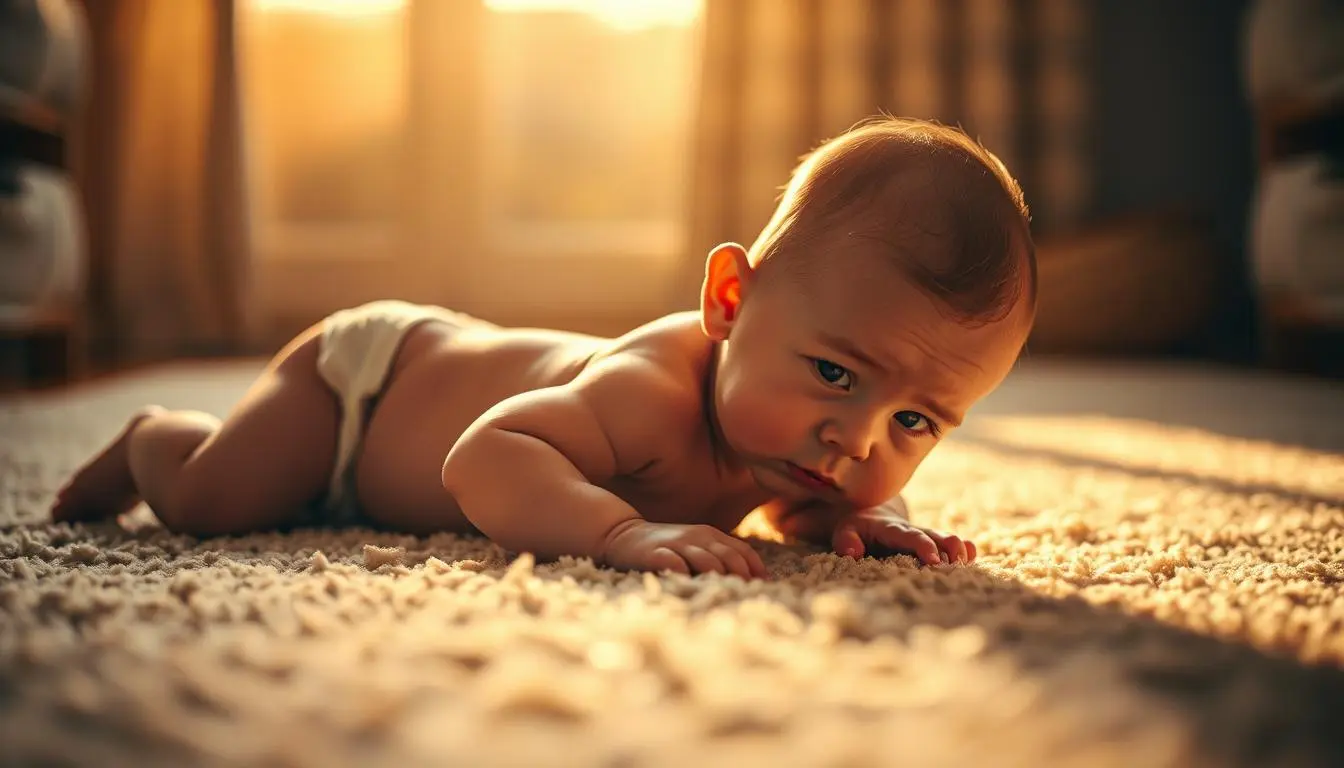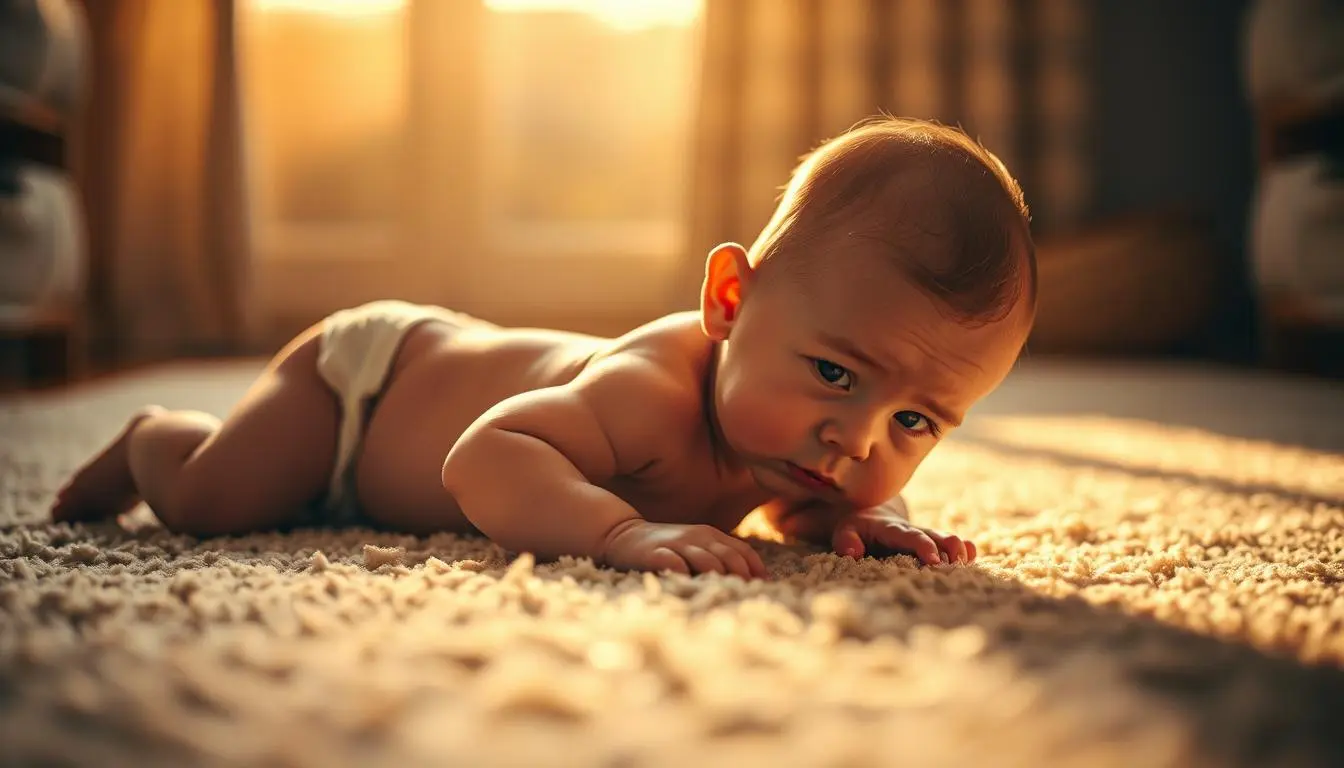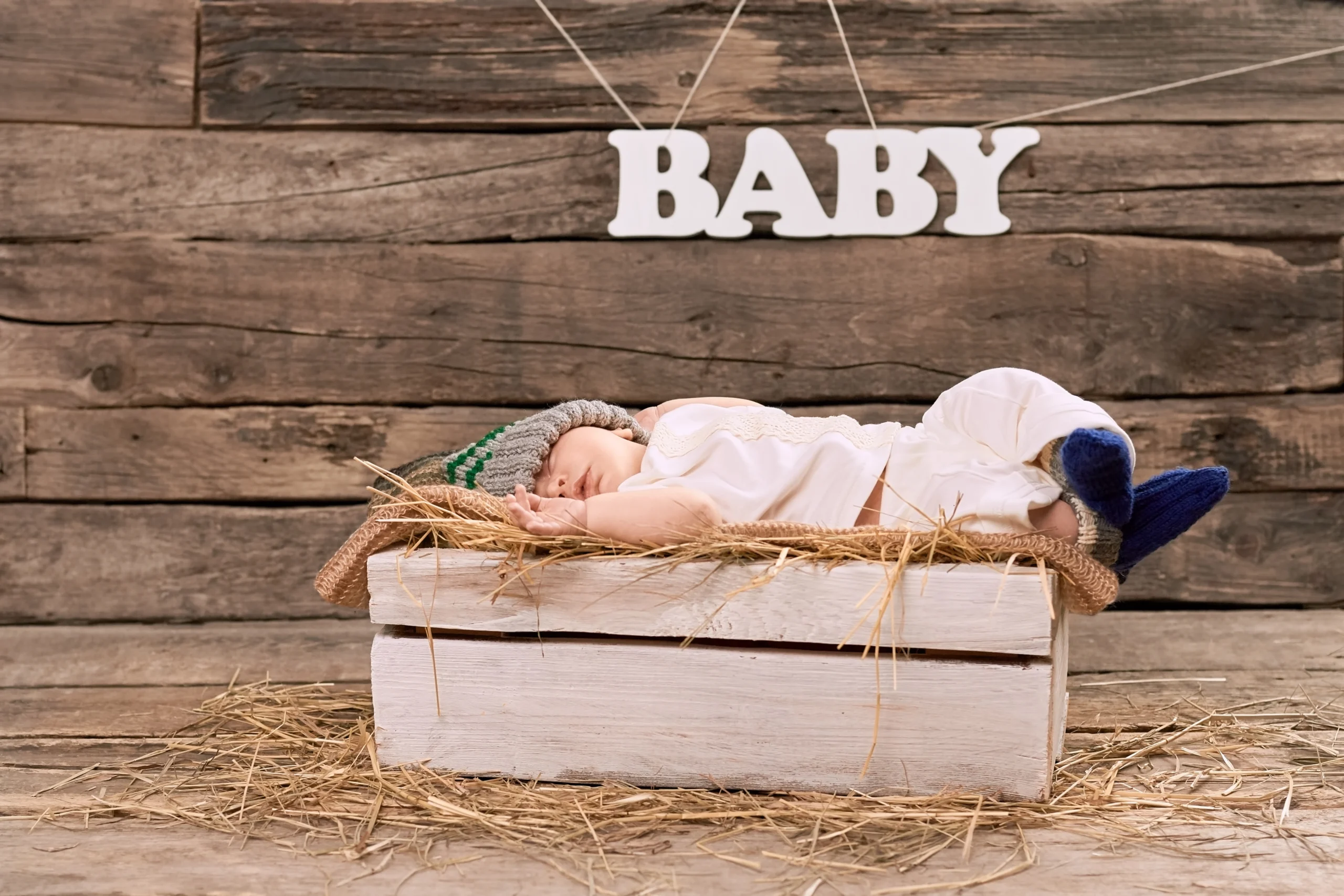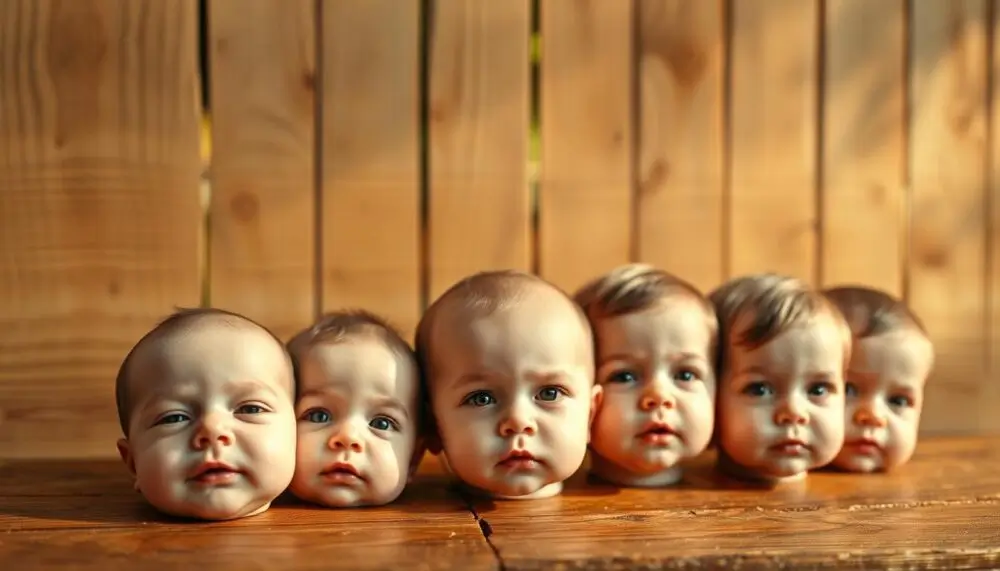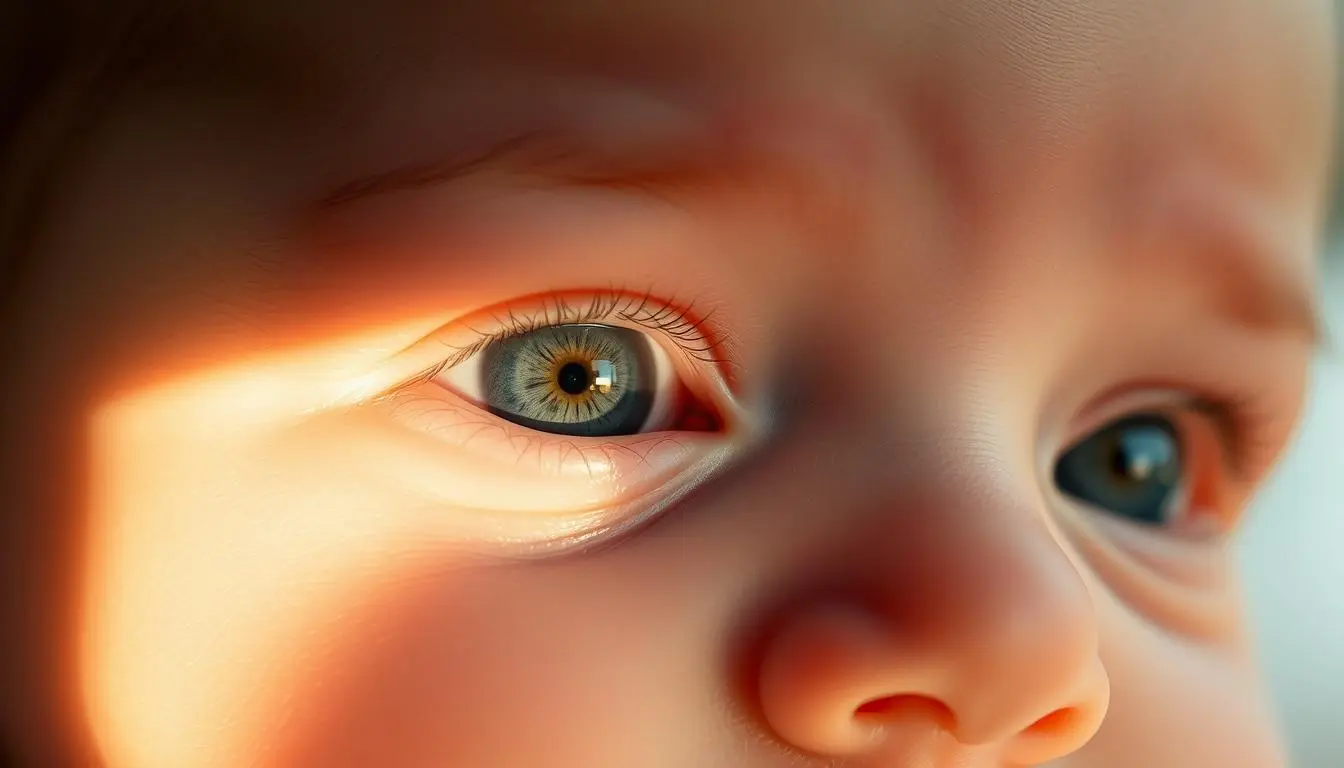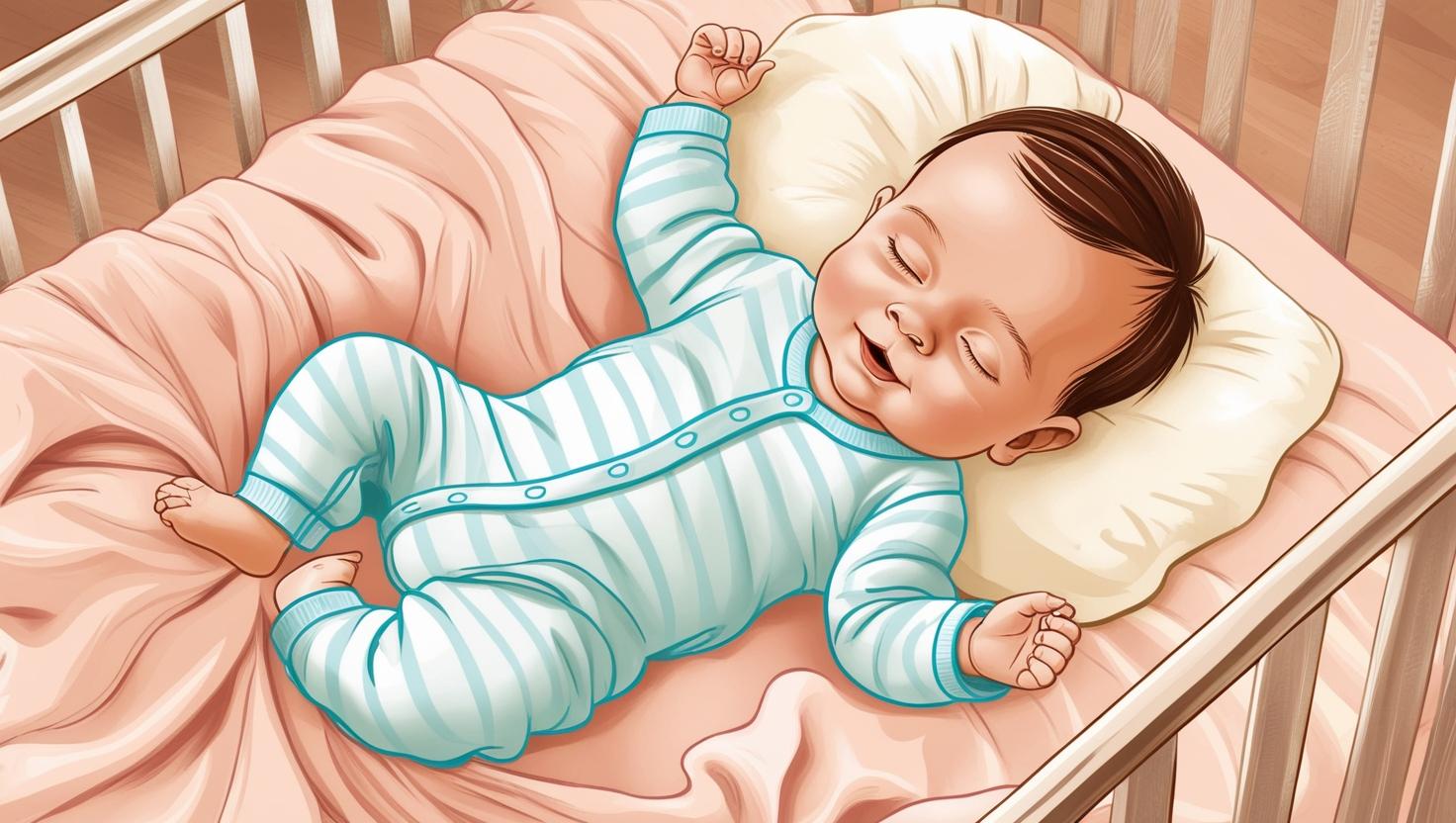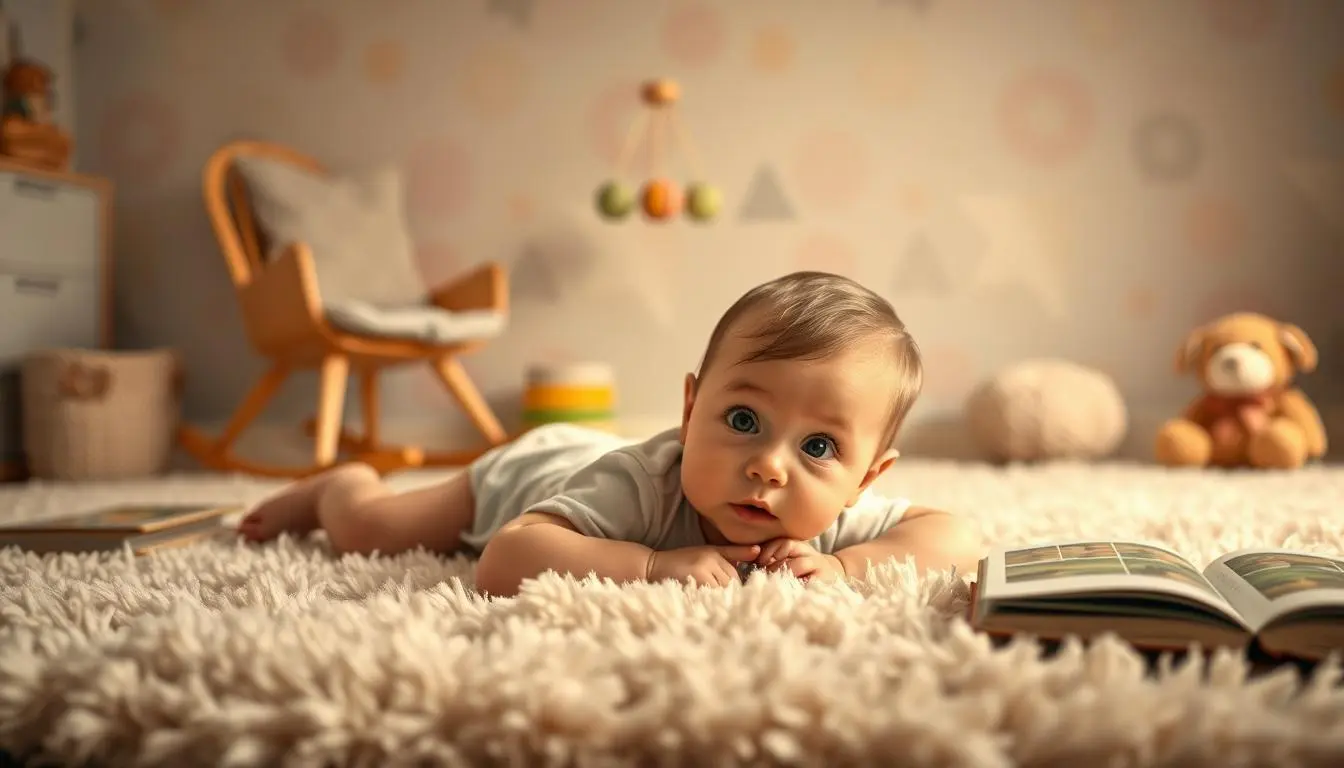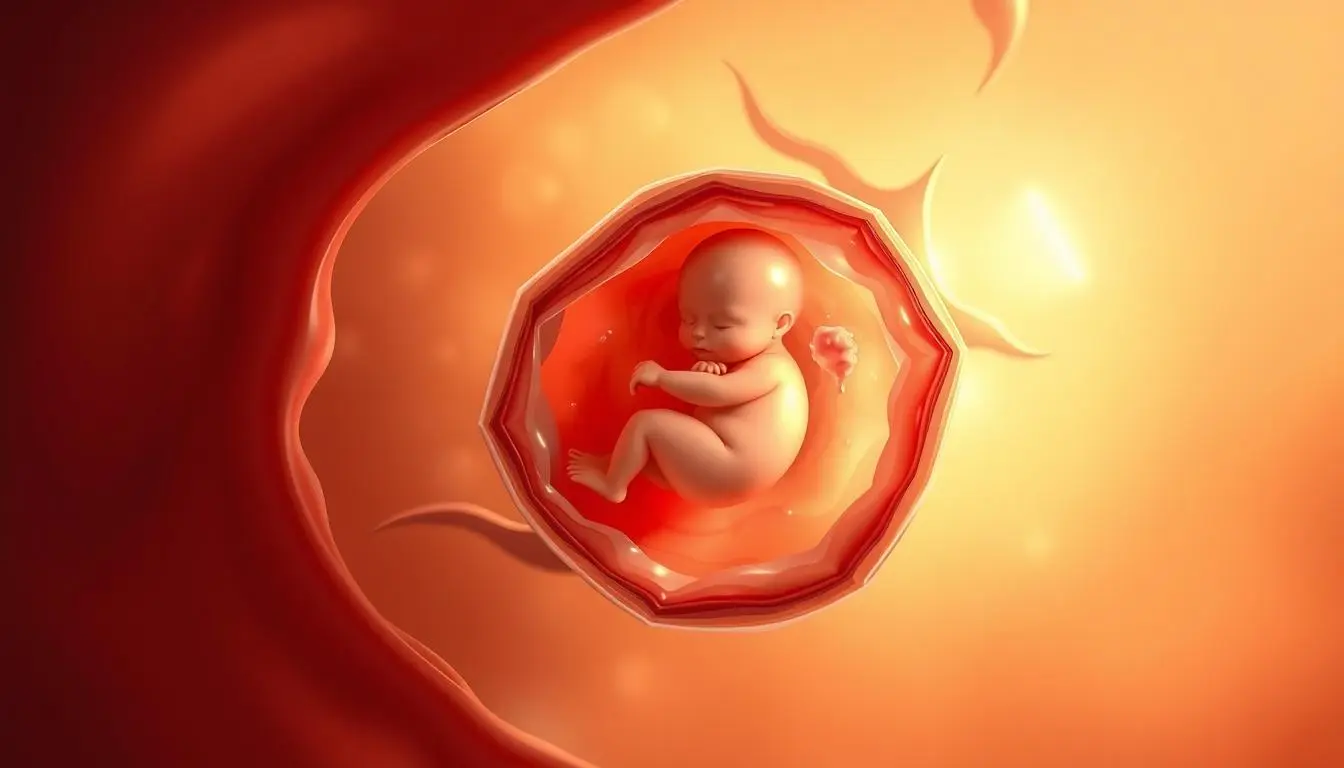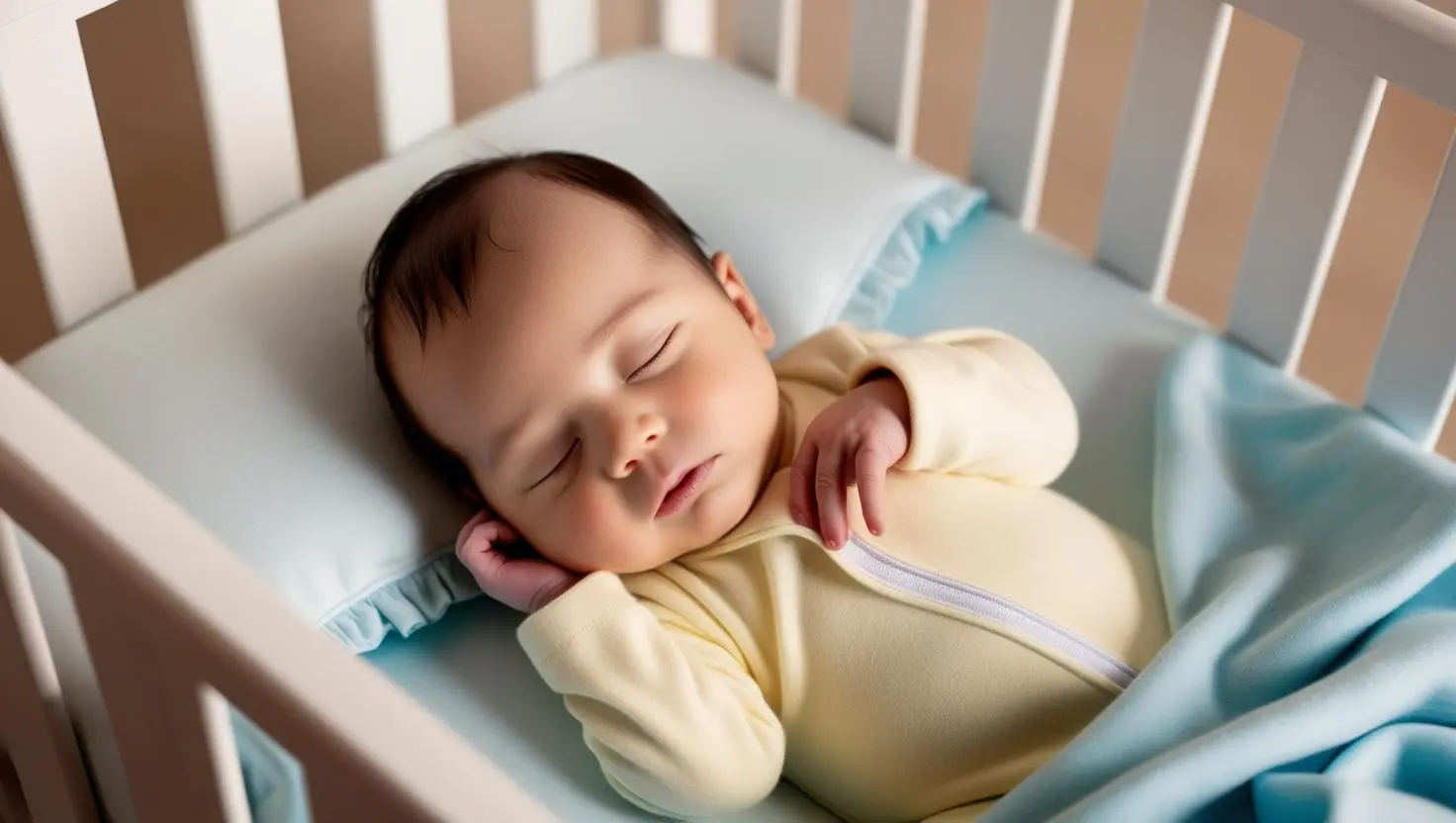How to Dress Baby for Sleep? Dressing your baby right for sleep is key for their comfort and safety. It’s normal to wonder what your baby should wear to bed for a good night’s sleep.
A well-dressed baby sleeps better. Good sleep is vital for their growth. The right clothes keep their body temperature right, stop overheating, and lower SIDS risk.

By following simple rules, you can make a sleep-friendly space for your baby. In this article, we’ll look at the 8 simple rules to dress your baby for a good night’s sleep.
Key Takeaways
- Understand the importance of dressing your baby correctly for sleep.
- Learn the ideal clothing for your baby’s sleep environment.
- Discover how to regulate your baby’s body temperature during sleep.
- Find out how to prevent overheating and reduce the risk of SIDS.
- Get practical tips on dressing your baby for a restful night’s sleep.
👶 Must-Have Baby Products Every Parent Needs – Shop Top Picks on Amazon
From newborn essentials to toddler favorites, the right baby products can make parenting smoother, safer, and even more joyful. Whether you’re shopping for your own little one or picking the perfect baby shower gift, we’ve got you covered!
🍼 Diapers, wipes, bottles & feeding gear
🛏️ Cribs, bassinets, baby monitors & nursery must-haves
🧴 Lotions, shampoos & sensitive-skin baby care
🎁 Gift sets, toys & accessories
👉 Browse the best baby products on Amazon
✔️ Trusted brands like Pampers, Enfamil, Aveeno Baby, and Graco
✔️ Parent-approved with thousands of 5-star reviews
✔️ Fast delivery & easy returns
Everything you need for baby’s first year — all in one place. 💗
Understanding Baby Sleep Temperature Needs
Keeping your baby’s sleep area at the right temperature is key. Babies, and newborns in particular, can’t control their body heat well. So, it’s up to parents to make sure their sleep space is just right.
Why Temperature Regulation Matters for Babies
Babies can’t handle extreme temperatures well. Being too hot or too cold can make them uncomfortable, stressed, and even unsafe. The right temperature helps your baby sleep well and stay safe.
Signs Your Baby Is Too Hot or Too Cold
It’s important to know when your baby is too hot or too cold. Look for physical and behavioral signs.
Physical Signs to Watch For
Here are some physical signs your baby might be too hot or too cold:
- Sweating or feeling hot to the touch
- Cold hands or feet
- Rapid breathing or flushed skin
Behavioral Signs of Temperature Discomfort
Behavioral changes can also show if your baby is too hot or too cold:
- Restlessness or irritability
- Difficulty settling down or staying asleep
- Unusual fussiness or colic-like behavior
Using a baby sleep temperature chart can help you find the perfect room temperature and clothes for your baby. A room temperature between 68-72°F (20-22°C) is usually safe and comfy.
| Room Temperature (°F) | Clothing Layers | Sleepwear Recommendation |
|---|---|---|
| 68-72 | 1-2 layers | Lightweight sleep sack |
| 64-67 | 2-3 layers | Medium-weight sleep sack |
| Below 64 | 3+ layers | Heavyweight sleep sack or footed sleeper |
Rule #1: How to Dress Baby for Sleep Properly
Dressing your baby for sleep is very important. It helps keep them comfortable and safe. The goal is to keep them warm but not too hot.
The Basic Principles of Baby Sleep Attire
When dressing your baby for sleep, think about the room’s temperature. Use layers for baby sleep that can be changed easily. This keeps their body temperature just right.
Choose clothes that breathe well and feel good against their skin. Don’t dress them too warmly. Overheating can be dangerous, as it’s linked to SIDS (Sudden Infant Death Syndrome).
The +1 Layer Rule Explained
The +1 layer rule is a simple way to dress your baby. It means dressing them in one more layer than you wear in the same place. This ensures they’re warm but not too hot.
For instance, if you wear a t-shirt and pants, your baby might need a t-shirt, pants, and a light sleeper or sleep sack. Remember, this rule can change based on the room’s temperature and your baby’s needs.
Rule #2: Choose the Right Fabrics for Baby Sleep
The fabric of your baby’s sleepwear is key for a safe and comfy sleep spot. The right fabric keeps your baby’s body temperature just right. It also helps prevent overheating and lowers SIDS (Sudden Infant Death Syndrome) risk.
Best Breathable Fabrics for Baby Sleepwear
Breathable fabrics are a must for baby sleepwear. They let air in and keep your baby’s body temperature comfy. Here are some top picks:
- Cotton: A natural, breathable fabric that soaks up moisture and lets air flow.
- Bamboo: Soft and breathable, bamboo is great for baby sleepwear.
- Modal: Made from wood pulp, modal is soft, breathable, and gentle on baby’s skin.
Cotton and Natural Fiber Benefits
Cotton and natural fibers are perfect for baby sleepwear. They’re breathable, soft, and soak up moisture. Cotton is great because it lets air in, keeping your baby’s body temperature just right.
Moisture-Wicking Properties
Moisture-wicking fabrics pull sweat away from the skin, keeping your baby dry and comfy. This is super helpful for babies who get hot at night. Choose sleepwear with these properties to keep your baby dry and cozy all night.
Fabrics to Avoid for Baby’s Sleep Safety
Some fabrics are not good for baby sleepwear because they’re not safe. Too thick, heavy, or non-breathable fabrics can make your baby too hot. Stay away from:
- Synthetic fibers like polyester, which can trap heat and moisture.
- Fleece, which can be too warm and increase the risk of overheating.
- Thick or heavy fabrics that can cause your baby to overheat.
By picking the right fabrics for your baby’s sleepwear, you can make sure they sleep safely and comfortably.
Rule #3: Dressing Baby for Different Seasons
As the seasons change, so do your baby’s sleep needs. It’s important to dress them right for their comfort and safety. The right clothes help keep their body temperature just right, avoiding too much heat or cold.

Summer Sleep Attire Guidelines
In summer, keeping your baby cool is key. Choose lightweight, breathable fabrics like cotton. A simple onesie is often enough for warm nights. Make sure the room is well-ventilated or use a fan to keep air moving.
Avoid dressing them too warmly, as this can cause overheating.
Winter Sleep Clothing Essentials
In winter, your baby needs to stay warm. Layering is essential. Start with a breathable base layer, then add warm sleepers or pajamas. Consider a sleep sack for extra warmth without the danger of loose blankets.
Make sure the layers aren’t too tight, so your baby can move comfortably.
Spring and Fall Transitional Dressing
Spring and fall bring big temperature changes. Dress your baby in layers that can be added or removed as needed. Dress them in one more layer than you are wearing. This helps them adjust to the changing room temperature.
By adjusting your baby’s sleep clothes for each season, you keep them comfortable and safe all year.
Rule #4: Using Sleep Sacks and Wearable Blankets Safely
Creating a safe sleep space for your baby is key. Learning how to use sleep sacks and wearable blankets is important. These alternatives to loose blankets can greatly lower the risk of SIDS and suffocation.
Benefits of Sleep Sacks Over Loose Blankets
Using sleep sacks or wearable blankets has many benefits. Firstly, they prevent blankets from covering your baby’s face, which can cause suffocation or SIDS. They also keep your baby at a steady body temperature, ensuring they stay comfortable all night.
These sacks also promote better sleep. They offer a cozy, secure place for your baby to rest.
The design of sleep sacks allows for movement while keeping your baby warm. This is great because it reduces the risk of overheating or overcooling, common with loose bedding.
Choosing the Right TOG Rating for Sleep Sacks
Choosing the right TOG rating for your baby’s sleep sack is key for their comfort and safety. TOG rating shows how warm the sleep sack will keep your baby.
Understanding TOG Ratings
TOG stands for ‘Tog Rating’ or ‘Thermal Overall Grade’. It measures how well a sleep sack keeps warm air in. The TOG rating system goes from 0.5 to 3, with higher numbers meaning warmer sleep sacks. For example, a 0.5 TOG is good for warmer places, while a 3 TOG is better for colder ones.
Matching TOG to Room Temperature
To pick the right TOG rating, think about your baby’s room temperature. Here’s a simple guide:
| Room Temperature (°F) | Recommended TOG Rating |
|---|---|
| 68-72 | 1-2 |
| 64-67 | 2-3 |
| Above 73 | 0.5-1 |
By matching the TOG rating to the room temperature, you can keep your baby comfortable and safe all night.
Rule #5: Baby Sleepwear by Room Temperature
It’s important to dress your baby right for the room temperature. This ensures they sleep comfortably and safely. The room’s temperature greatly affects your baby’s comfort and safety.

Baby Sleep Temperature Chart Guide
A baby sleep temperature chart is very helpful for parents. It shows how to dress your baby for different room temperatures. For example, in cooler rooms, a long-sleeved onesie and a sleep sack are good. In warmer rooms, a short-sleeved onesie is enough.
Using a chart helps you pick the right clothes for your baby. Remember, every baby is different. Watch how your baby feels and adjust their clothes as needed.
Adjusting Clothing for Different Room Temperatures
The room temperature is key in choosing your baby’s sleepwear. Dressing them right keeps them comfortable all night.
Clothing for Cooler Rooms (68°F and Below)
In cool rooms, dress your baby in layers for warmth. Start with a long-sleeved onesie and add a sleep sack or blanket. Make sure the sleep sack fits the temperature to avoid overheating.
Clothing for Warmer Rooms (72°F and Above)
In warm rooms, focus on keeping your baby cool. A short-sleeved onesie is usually enough. Don’t use thick sleep sacks or too many layers, as they can make your baby too hot. Choose lightweight, breathable fabrics for good airflow.
By dressing your baby right for the room temperature, you make their sleep safe and comfy. Always check on your baby to make sure they’re not too hot or cold. Adjust their clothes as needed.
Rule #6: Nighttime Diaper Considerations
Nighttime diaper choices are key to your baby’s comfort and safety while sleeping. The right diaper prevents leaks and discomfort. This helps both your baby and you get a good night’s sleep.
Choosing a diaper for nighttime means finding the right balance. You want it to be absorbent but not too bulky. A diaper that’s too big can be uncomfortable, while one that’s not absorbent enough might leak.
Balancing Absorbency and Comfort
Look for diapers that are both absorbent and comfortable. These diapers use special materials to keep your baby dry all night. They should also be soft against your baby’s skin and not cause any irritation.
When to Size Up for Overnight Sleep
It’s important to know when to switch to a bigger diaper for nighttime. If you see leaks or if the diaper feels too tight, it’s time to go up a size. A bigger diaper can handle more liquid and be more comfortable, reducing the chance of skin irritation.
By thinking about these points, you can pick the best diaper for your baby’s nighttime needs. This ensures a safe and comfy sleep environment for them.
Rule #7: Special Considerations for Newborns vs. Older Babies
It’s important to know the sleep clothing needs for newborns and older babies. Newborns are fragile and have unique needs compared to older babies. They need special care in their sleep clothes.
Newborn Sleep Clothing Needs
Newborns have trouble keeping warm. They should wear breathable, layered clothing to stay at the right temperature. Dress them in one more layer than you are wearing.
Dr. Jane Smith, a pediatrician, says, “Newborns should wear lightweight, breathable fabrics. This prevents overheating, which is a SIDS risk.”
“Dressing newborns in layers lets parents adjust their clothes for the room’s temperature. This keeps them comfortable.”
Adjusting as Baby Grows and Becomes More Mobile
As babies grow and move more, their sleep clothes change. Older babies need clothes that let them move freely but stay safe and comfortable. Sleep sacks are good because they keep warm without loose blankets.
| Age | Recommended Clothing | Key Considerations |
|---|---|---|
| Newborn (0-3 months) | Layered, breathable clothing | Temperature regulation, comfort |
| Older Baby (4-12 months) | Comfortable, mobile-friendly sleepwear | Safety, freedom of movement |
Rule #8: How to Keep Baby Warm at Night Without Overheating
Keeping your baby warm at night is key for their comfort and safety. Overheating can increase the risk of SIDS (Sudden Infant Death Syndrome). So, finding the right balance is essential.
Using layers is a smart way to keep your baby warm. You can add or remove layers as needed. This lets you adjust their clothing based on the room’s temperature and their needs.
Safe Alternatives to Extra Clothing
Instead of extra clothes, try a sleep sack or wearable blanket. These options keep your baby warm without the danger of loose blankets.
Sleep sacks are great because they come in different TOG ratings. This means you can pick the perfect warmth for your baby’s sleep space.
Monitoring Your Baby’s Temperature During Sleep
It’s important to watch your baby’s temperature to avoid overheating. There are a few ways to check if they’re comfortable.
Using Baby Monitors with Temperature Sensors
Some baby monitors have temperature sensors. These sensors alert you if the room gets too hot or cold. They offer peace of mind and help keep your baby’s sleep environment safe.
The Neck and Chest Check Method
Feeling your baby’s neck or chest is a simple way to check their temperature. If they’re too hot or sweaty, they’re probably overheated. If they’re cold, you might need to add a layer.
Conclusion: Creating a Safe and Comfortable Sleep Environment
Dressing your baby for sleep is very important. It helps make their sleep area safe and comfy. By following eight simple rules, you can make sure your baby sleeps well.
Knowing what temperature your baby likes for sleep is key. Choosing the right fabrics and dressing them right for each season matters too. Using sleep sacks and blankets safely, thinking about diaper changes at night, and adjusting clothes for room temperature are also important.
Following these tips can lower the chance of your baby getting too hot or cold. This helps create a healthy sleep space. Brands like Halo and Sleepyhead have sleep sacks and clothes that make a cozy, safe sleep area for your baby.
A happy baby is a well-rested one. By focusing on their sleep and making their sleep area comfy, you help your baby grow and be happy.
FAQ
What is the ideal room temperature for a baby to sleep?
The American Academy of Pediatrics suggests a room temperature of 68-72°F (20-22°C). This helps prevent Sudden Infant Death Syndrome (SIDS) and ensures a safe sleep space.
How do I know if my baby is too hot or too cold while sleeping?
Look for signs like sweating, flushed skin, or fast breathing if it’s too hot. Cool hands or feet or shivering mean it’s too cold. A baby monitor with a temperature sensor can also help.
What type of fabric is best for baby sleepwear?
Choose breathable fabrics like cotton for baby sleepwear. Cotton keeps your baby cool and comfortable. Opt for cotton sleepers or sleep sacks with the right TOG rating for the room’s temperature.
How many layers should my baby wear to sleep?
Dress your baby in one more layer than you’d wear in the same room. This is the +1 layer rule. It helps keep your baby at the right temperature.
Can I use a blanket to keep my baby warm at night?
Avoid loose blankets in the crib to prevent SIDS. Instead, use a sleep sack or wearable blanket. They keep your baby warm without the risk of overheating or getting tangled.
How do I choose the right TOG rating for my baby’s sleep sack?
The TOG rating shows the sleep sack’s warmth level. For warm rooms (above 72°F or 22°C), choose a lower TOG rating (0.5-1). For cooler rooms (below 68°F or 20°C), a higher TOG rating (2.5-3) is better. Always follow the manufacturer’s guidelines.
What are the safest clothes for my baby to sleep in?
Opt for sleepwear made from breathable fabrics. It should have no loose threads or small parts. Also, avoid tight or constrictive clothing and anything with ribbons or ties.
How can I keep my baby warm at night without overheating?
Use a sleep sack or wearable blanket with the right TOG rating for the room’s temperature. Layer lightweight, breathable clothing underneath. Adjust the room temperature or use a fan to keep it comfortable.

